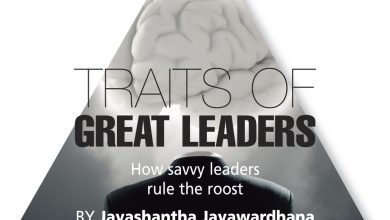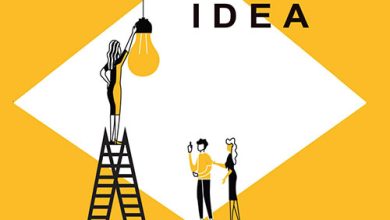TRAINING SKILLS
TEACH LIKE A PRO!
Pallavi Pinakin offers a host of tips to make the most of training programmes

“A good teacher, like a good entertainer, first must hold his audience’s attention; then, he can teach his lesson,” says Dr. John Henrik Clarke. Any trainer or facilitation expert will attest to this, especially when it comes to training adults.
Unlike children, most adults enter a training room with high expectations and greater rigidity. The trainer needs to first spark the participants’ curiosity, then hold their attention, while gently guiding them towards discovery and learning.
Along with inspiration, though, don’t forget more mundane matters like computers, seating and handouts. These may seem like minor details, but they can make or break a training session. Moreover, the trainer’s work doesn’t end with the final bell. You must go the extra mile, to enable the post-programme application of skills.
So what are the mandatory basics of conducting a successful training programme?
PREPARE THE ROOM It is essential that everything is in working order. Many of us have seen a good session being ruined when the trainer is unable to connect his laptop with the projector.
If possible, come in the day before the programme, and conduct a test run. Check that your equipment is compatible with those in the room, and request any additional accessories you may need. And here’s a pro tip: play an audio track, and sit at the back of the room to check out the acoustics.
Arrive early for the programme, and organise seating according to your agenda. For instance, if you have many collaborative activities, arrange the chairs and tables that allow group seating. If the work is mostly at an individual level, or for pairs, try a semi-circle or horseshoe shape. Each learner must have a clear view of you, as well as the whiteboard or projector screen.
PERFORM AND INVOLVE Use what you have at your disposal to capture and maintain the attention of your audience – else, all efforts will be futile. Use your voice to transform yourself into a performer of sorts. Rather than adopting a monotone, use the power of your voice to engage the audience – vary your intonation and volume, pause for effect and so on, to keep your listeners engaged.
However, entertainment alone will not suffice! Learners, especially adults, need to take ownership of their learning process. Build engagement by using questions, brainstorming, discussions and feedback, and permit the group to have a degree of control in shaping the training experience. Keep an eye on energy levels in the room; if you see them sagging, boost the spirits with a quick energiser.
FORGE A CONNECTION One simple way of creating a connection is to use the participants’ names. As they’ll probably be wearing a name tag or have their name card on the table, try to memorise all the names, and use them as much as possible. This creates an instant connection between the facilitator and learners.
When speaking to the group, remember the ‘lighthouse effect.’ Ensure that, while talking, your glances sweep across the room, from one end to the other – like the beam of a lighthouse – instead of remaining on one side or the other.
TRANSITIONAL SUPPORT Adult participation in training programmes is usually limited to a few hours or days. While many learners leave with valuable lessons, they haven’t yet had time to perfect these new skills. Failure to practise means they could easily forget them.
Offer continuing support to encourage participants to use their newly acquired knowledge. This may be in the form of weekly check-ins via email, or an online group chat where learners can share their experiences.
If possible, you could even nominate one of the employees to act as a coach, and consult you with a consolidated list of issues at regular intervals. The idea is to maintain a presence until the learning has been mainstreamed. Without this aspect, many a training programme becomes useless within hours of its conclusion.
It can also be difficult to take the skills that are learned in a training room and apply them in a professional context, which brings us to the last point.
LINK BACK TO WORK Adult learners want inspiration and engagement as much as – if not more than – young learners. But remember, when the programme ends, they will be returning to their offices!
The end goal is to provide learning that will help them succeed at work. For participants to bridge the distance between the classroom and real life more easily, the facilitator can also utilise on-the-job materials during the programme.
Include checklists, software and flow charts, and aim for the same kind of material to which participants have access in the office. And prepare a series of reader-friendly handouts for learners to study, at their own pace, including ways in which they can practise their new skills in their workplace.







Contrary to the belief that full time commercial trainers are capable, certain academics, who also conduct training on part time basis, may also turn out to be the best. Commercial trainers, who have established themselves as reputed, more often seem to think and act in terms of business purposes. Many employees who undergo training under them criticise that the commercial trainer is biased and loyal to the employer to retain his demand.
Therefore, such training programmes are driven to achieve more from the employers’ point of view. This primarily focusses on increasing sales volumes, client portfolios and piling up more challenges for staff such as multi-tasking. Limited light is shed on employees to enhance their outlook/ potential.
In terms of an academic who carries out training, both trainer and participants are eager to learn from each other. Then it becomes a mutually rewarding activity. The former will be receptive for employee brainstorming, stimulating employees to open up, express their hands-on experiences and interesting discussions of practical case studies for application of concepts in the commercial world. Academic trainers will facilitate a learning curve, with application of concepts and research insights in a business organisation setting. Employees too will be eager to consult such trainers during and post training. Seeking advice from such academic trainers can reshape their career.
A fine synthesis of enthusiasm, knowledge, application and curiosity, makes both trainer and participants gain rightfully.
A trainer’s job should not be a one off job or a routine task. Trainers should constantly keep themselves updated, as they are at the forefront of learning and development.
Like teaching, training too is a craft. Certifications may be a gateway to the profession, but they may not hold the ‘success key’ to be a professional trainer.
It is said that one hour of training means at least four hours of preparation for the trainer. This is enriched by the comprehensiveness of the training approach deployed. Many successful trainers humbly self-learn from their lessons, thanks to appreciations and criticisms from their previous sessions. Being connected to a participant from respective training sessions will offer genuine and comprehensive feedback to the trainer, including views of fellow participants. This will enable the trainer’s continuous improvement. Similarly, staying connected to a loyal participant (employee) can spread good word of mouth.
As mentioned at the onset, training is a craft which is not complete without the trainers’ innate skills, personality, visualisation and creative capability, to win the hearts and minds of the participants or audience.
The trainer should be of integrity and professionalism, starting from the point of taking the responsible decision of undertaking the training programme. Training projects should be accepted based on the resource person’s area of expertise. Studying the requirement and the nature of the audience, then selecting material and methods wisely – perhaps drawing from previous experiences and the consultation of others’ ideas – are some of trainers’ ethics. The latter should always be open and adaptive to new methods of capturing the attention of the audience, manage flow and content energetically to effectively manoeuvre the session with a toolkit that works best.
It is recommended that trainers do not get hooked to abundant slide shares and talk shows or simply fall prey to the trends that are commonly used in almost every training session. A trainer should be a professional and not be adjudged as a commodity, in the eyes of the audience. If the participating audience loses confidence, it will consequently bear an unfavourable impact on trainer’s reputation. Picking one’s (trainer’s) own unique way that goes well with his/her personality and the given purpose (of training and audience) is one sustainable mechanism to teach like a pro.
Trainers, shine thyself and make others shine.